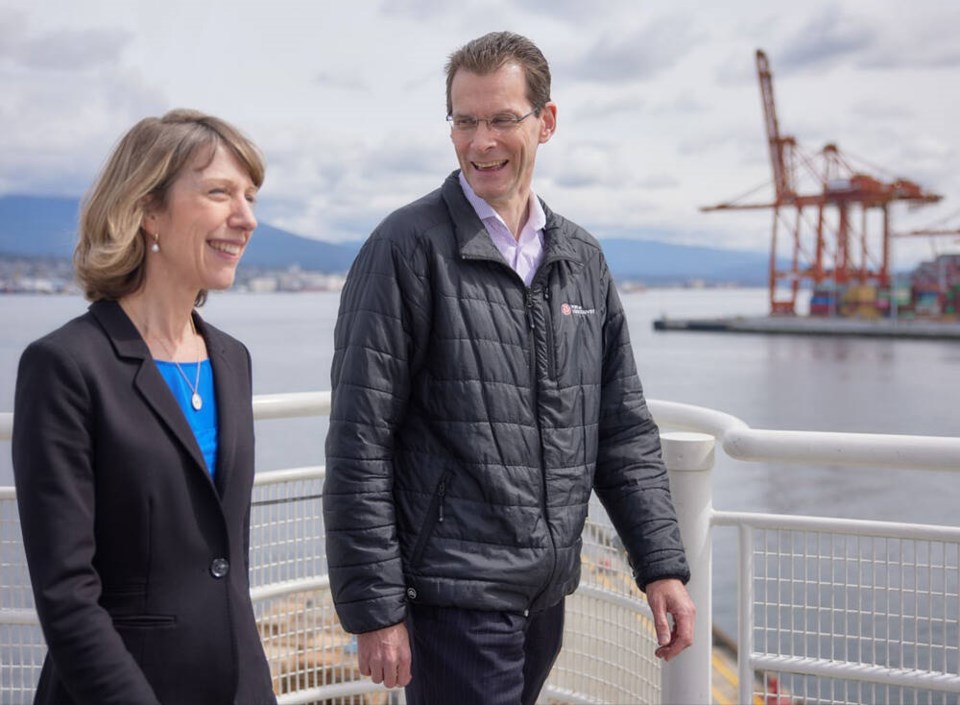It’s been a long road, but also a successful story of collaboration.
That’s how Vancouver Fraser Port Authority (VFPA) President and CEO Robin Silvester describes last week’s announcement that the Roberts Bank Terminal 2 (RBT2) project has been approved.
After a lengthy and complex process that started even before the port formally submitted its application a decade ago, the federal government gave the green light for a new three-berth container terminal adjacent to the current port facility at Roberts Bank in Delta.
The approval comes with a lengthy list of conditions.
The port says the decision comes as Canada’s container trade remains on a long-term growth trajectory, with west coast marine container terminals forecast to hit capacity by the mid- to late-2020s.
In a follow-up interview with the Optimist this week, Silvester admitted he didn’t know at the outset just how long the review process would take, but he is nonetheless pleased with the strong collaboration, especially with Indigenous groups, which was instrumental in seeing the proposal approved.
“It’s a great news story and one of the things I’m most proud of is the level of First Nations engagement throughout the process,” said Silvester. “If you asked me at the beginning that we’d have 26 First Nations giving consent for the project by the time of decision, I’d say I’d be delighted if we could have that level of engagement, and we did. We had 26 out of 27 groups we were seeking who signed mutual benefit agreements and are going to benefit directly from the project, and will help shape the project the way it’s delivered.”
Noting the new facility could be completed by the early 2030’s, Silvester said there’s still much work ahead including various approvals to obtain and field studies ongoing.
He added it will still be a story of collaboration over the next decade.
As of now, it’s expected that likely two of the three berths will begin operations when the facility opens with the third beginning sometime afterward, depending on how quickly volumes increase.
According to the port, the additional container terminal capacity will strengthen national supply-chain resilience.
Silvester noted that when it comes to Japan and India alone, 20 per cent of this country’s exports to both those countries go in containers through the Port of Vancouver
“It’s a very significant milestone for Canada and the cargo that moves in containers. It’s goods Canadians all across the country are buying in stores and high-quality Canadian exports are going all around the world. It’s really a project that’s going to connect Canada with the world,” he said.




